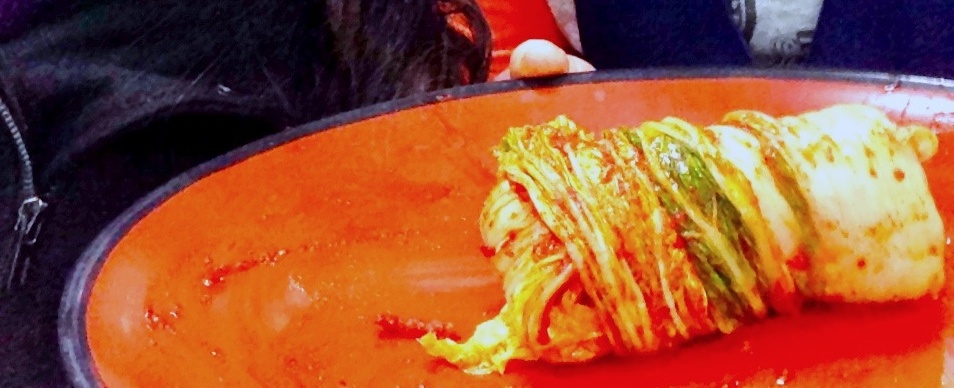
This weekend I learned to make kimchi right from its homeland, Korea! I am very fortunate to be here for 3 weeks, and I am taking full advantage of every moment to learn and savor this fantastic and very exciting adventure…and share it with you! So we may learn and enjoy together.
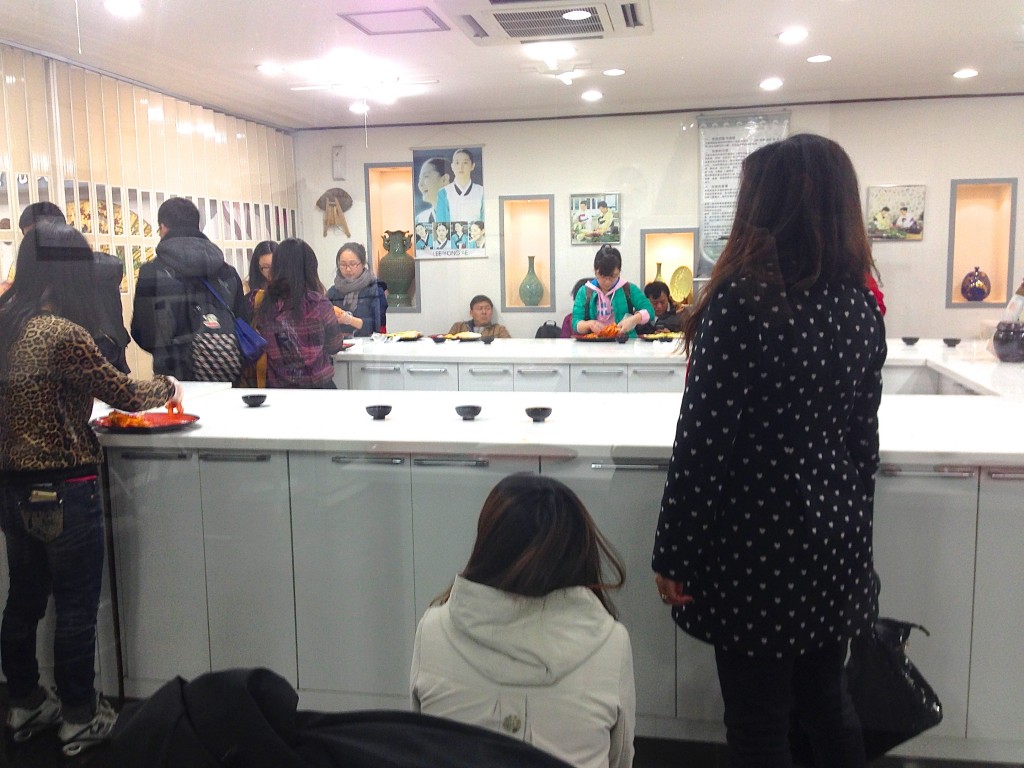
The next class room was filling up, while I had a private “English” (aka just basically grunting and showing) lesson. :)
I went to a kimchi school in Seoul, where the instructor did not speak English. He did dig up a sheet of the instructions and recipe in English, which I retyped and added on to, below. Next door a full class of Korean students was assembling, but as the only non-Korean I did get a private session.
Tomorrow, I will add some clips of the video of him teaching me, which I hope you will find helpful!
Kimchi, like Probiotic & Enzyme Salad or raw sauerkraut, is a cultured, fermented food teaming with nutritious probiotics, vitamin C and B vitamins. It’s put on the table with literally every lunch and dinner to be eaten along with the meal, which is a great thing because it aids with digestion (and traditional Korean fare involves a lot of meat, pork and seafood!).
Note: Some traditional kimchi recipes contain fish sauce, but there are absolutely no animal products of any kind in this recipe.
I will be posting more pics about my food and cultural adventures in Korea later this week, so please come back for more adventures tomorrow.
Love and Happy Fermenting!
Kimberly
Cabbage*:
* In the class and here in Korea Asian cabbage is used, which is long and thin. You can find them at health markets sometimes, or in Asian markets.
If you can’t find an Asian cabbage, just use a regular Napa cabbage and cut into quarters. Instead of rolling at the end of the recipe, you can just leave the cabbage in a vertical stack.
- Mix salt into warm water- 15% salt. This is what the directions said…if that seems weird or confusing to you just add a few Tbs. :)
- Place ¼ of cabbage into the water
- Let the cabbage soak for 5 hours.
- Turn the cabbage over every hour.
Drain all the water off the cabbage.
Paste
In a large bowl mix together:
– 2 thin slices of radish, diced
– 2 small spring onions chopped
– 2 Tbs. of chili powder
– 1 tsp. of sugar (can substitute about ¼ tsp. stevia if you like)
– 1 tsp. of sesame seeds
– 1 tsp of lemongrass (in paste form, look for in an Asian market or in Asian section of health store)
– 1 Tbs. of ginger (in paste form, look for at market)
Allow the mixture to rest for 1 hour
Here’s a video where we show more of the process:
To Create Kimchi
- Cut off the tough stem part from each cabbage quarter, leaving enough to hold the leaves together. Carefully separate each layer of the cabbage without breaking them off.
- In between each layer, spread a thin layer of paste with your hands or a spoon. Continue for all the layers.
- Fold the inner cabbage leaves in half. (Omit this and step #4 for Napa cabbage, just leave in a stack). See the video above for clarity.
- Use the outer 2 cabbage leaves to wrap around the bundle, and secure the whole bunch.
- Place all the bunches or stacks in a jar or airtight container, then press down hard to remove air pockets before covering.
- Leave at room temperature for 3 days minimum. According to my instructor and the Korean cooking class, it lasts up to 3 years! (Hopefully you will eat it before then and make more!).
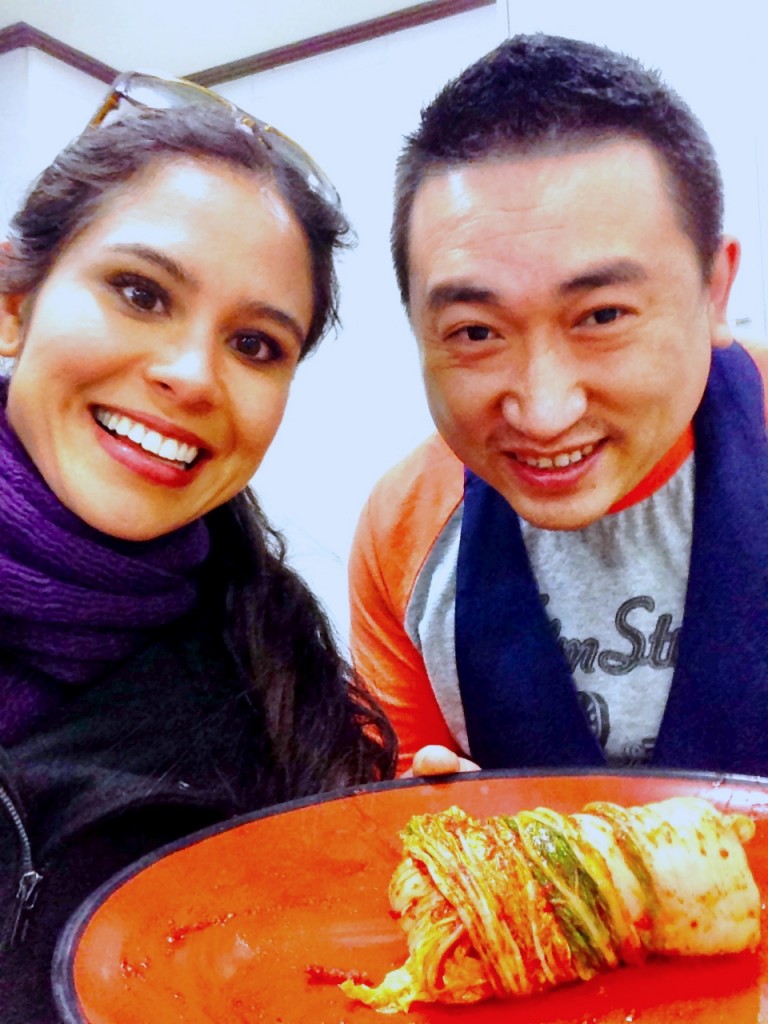
Voila! Here is is again (arranged nicer with the help of my instructor). He thought I was very odd because I refused to add the fish sauce he handed me, but in the end I think he was a proud teacher of my work. :)
Let me know how you do and any variations on the paste or the wrapping/stack technique that you may discover.
Happy Fermenting!
xx Kimberly
Ta daa!! I know… it sort of looks like a sad burrito but it is in fact my kimchi masterpiece!!!

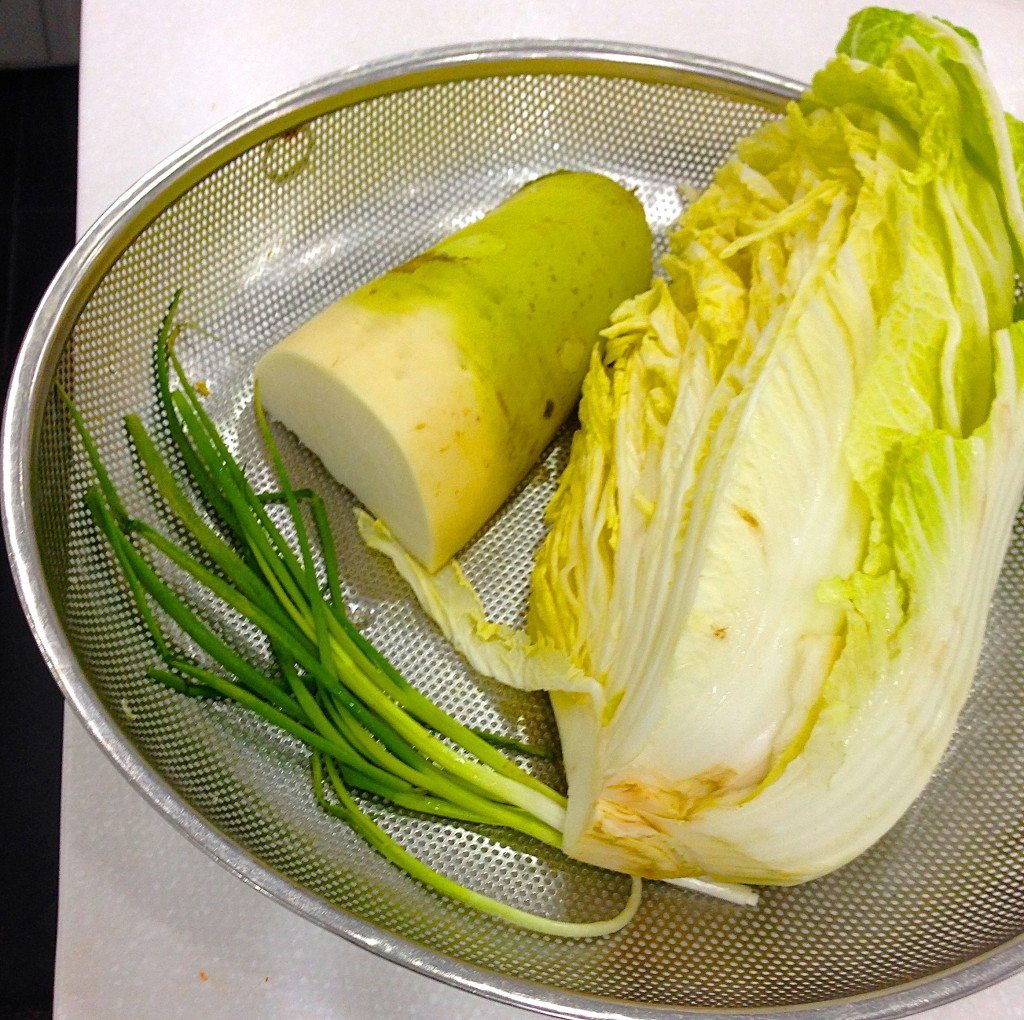
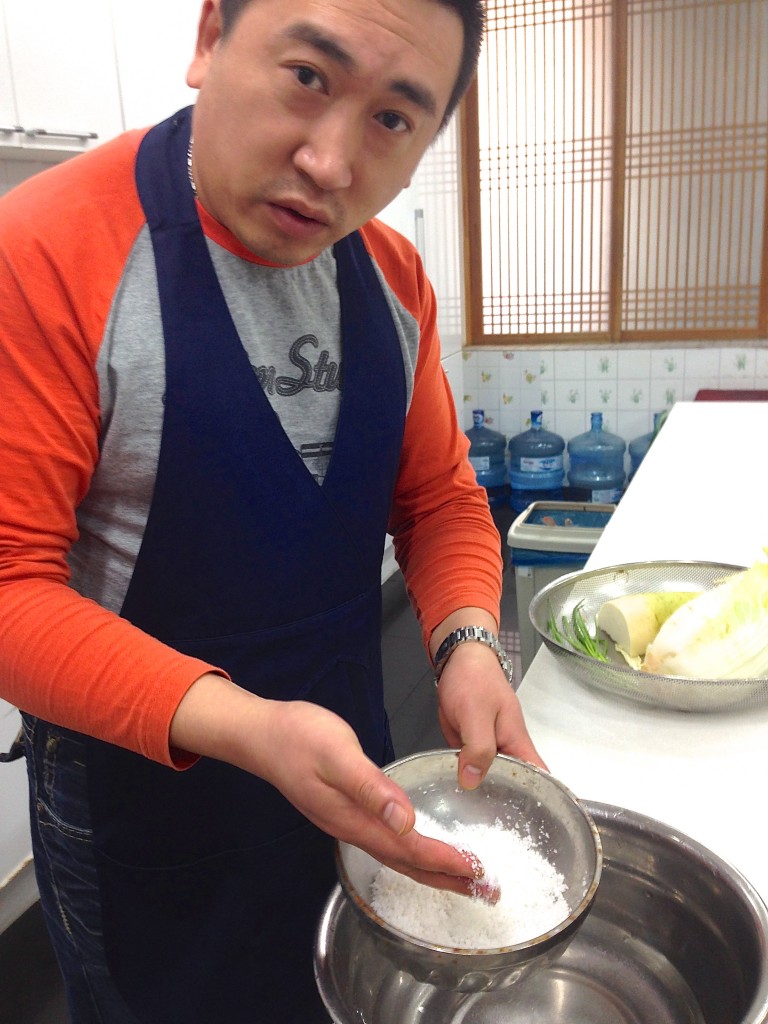
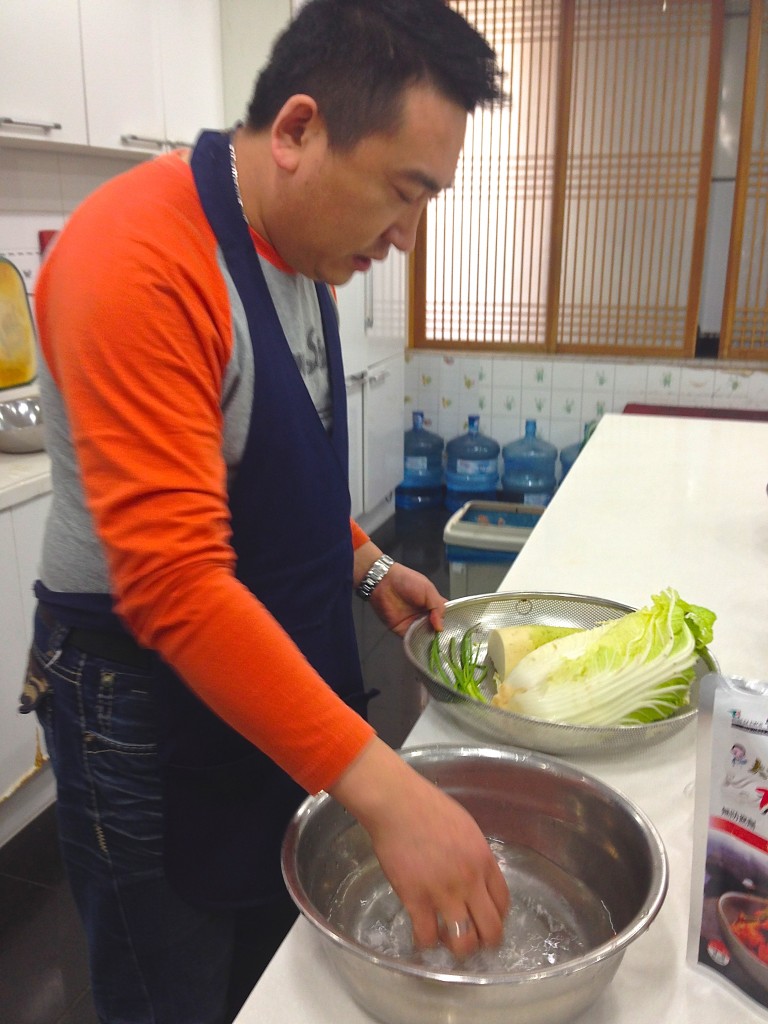



0 Comments